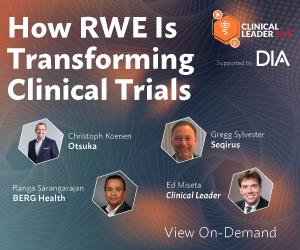Merck's Efforts To Increase Patient Diversity

By Ed Miseta, Chief Editor, Clinical Leader

The barriers to minority participation in clinical research are well-known. Despite our knowledge of these barriers, the issues continue to exist. Those barriers include a distrust of the healthcare system, a lack of comfort with the clinical trial process, a lack of awareness about trial opportunities, and, more recently, the social determinants of health, logistical barriers, out-of-pocket costs, the complexity of the study design, and study conduct.
“It’s clear we need to do more of our research in the sites and communities that have access to the patients we are hoping to recruit,” says Luther Clark, deputy chief patient officer for Merck. “I believe one of the reasons pharma efforts to recruit a more diverse patient population have failed is because of our approach. Many efforts have tended to focus on a single barrier or a single stakeholder. There are multiple barriers and multiple stakeholders that need to be addressed in a more coordinated effort. We are now at a moment in time when we can do that. The COVID-19 pandemic shined a spotlight on issues of racial injustice. We have an opportunity to address this more broadly and make some real progress.”
Social Determinants Impact Outcomes

“For some time, we have had a program of active partnerships and collaborations with community leaders and trusted forces within the community,” says Clark. “We believe that community relations, community partnerships, and community collaborations are the most powerful opportunities we have to recruit and enroll diverse participants. Those three things allow us the opportunity to assist with increasing awareness by providing educational programs. Those relationships also help us to address the issue of trust. The fear of becoming a Guinea pig in a clinical trial continues to be the most significant barrier to clinical participation.”
Clark notes the decision of whether to participate in a study is up to the patient, but that decision can be influenced by family, friends, and other trusted voices and leaders within the community. He believes the efforts to educate and increase awareness cannot be limited to the participant. Although the company is doubling down on those efforts to reach leaders and trusted voices, The effort is still in the early stages. There are multiple stakeholders who must be addressed, and each has opportunities and responsibilities to help address the diversity issue.
Embedding Diversity In Processes
To overcome these barriers, Merck opted to focus on two areas: Embedding diversity in Merck’s clinical research processes and developing a dashboard that allows the company to track the success of its diversity efforts.
Embedding diversity in clinical processes means going back to the early stages of a trial, before planning for the trial even begins, and ensuring diversity is a component of every phase of the trial.
“We cannot overcome diversity issues by attempting to increase diversity in a single study or a single protocol,” states Clark. “Diversity needs to be made a priority across the company. The effort must be deliberate and there needs to be tools and processes included in the research program. That means having a diversity plan and understanding that adjustments will have to be made as you move forward.”
Clark cites the COVID-19 pandemic as one example. There were three main COVID studies performed in the U.S. All of them had diversity plans in place, but all had to address challenges that arose and forced companies to modify their plans. Companies also need to ensure that they have the resources and staff available to do so.
Tracking your efforts is also important and that is where the dashboard comes into play. Clark notes it is used to monitor and track success. Merck’s dashboard allows for real-time tracking of patient recruitment as well as the recruitment of diverse patients.
“If we are falling short of the mark, we will know it,” says Clark. “The shortfall can also be brought to the attention of our sites where necessary adjustments can be made. That means we can track enrollment, the diversity of our enrollment, and make the adjustments necessary to achieve success.”
Turn To Trusted Voices
Clark noted that patients will listen to community leaders and trusted voices. But who exactly are those leaders and voices? He notes they come from many different places. They may be family, friends, caregivers, and other individuals who are important to the patient. They can also be community stakeholders such as faith-based organizations, nonprofit and civic organizations, and patient advocacy groups and health care providers.
“When it comes to medical decision-making, a patient's treating physician is often one of the most trusted forces,” says Clark. “Individuals who have taken part in a trial are another good source of information. We can give patients information from the sponsor and site perspective, but patients who have been in a trial can share their own personal perspectives is critically important. I would also caution sponsor companies look at the makeup of site personnel and investigators. They are a trusted voice in the community and need to be more reflective of the patients you're recruiting.”
Clark also mentions the importance of sites. He notes sites will be the place where minority patients are recruited. Therefore, sponsor companies need to ensure they have access to the needed investigators, infrastructure, and resources necessary to reach patients. Only by having conversations with sites will you be able to know what their needs are. Since sites know their patients, they also need to be in the communities where diverse patient populations are located.
“The places where patients get their healthcare are generally the best places to recruit,” notes Clark. “These are also the best places to conduct your education awareness efforts. Sites will always be key to conducting recruitment in a successful and sustainable manner.”
“This issue is very important to us,” adds Clark. “We want to develop new and innovative therapies that address unmet needs, but we also want them to be available to all patients. The challenge now is continuing to address community partnerships and collaborations. That will be the true opportunity for us.”

